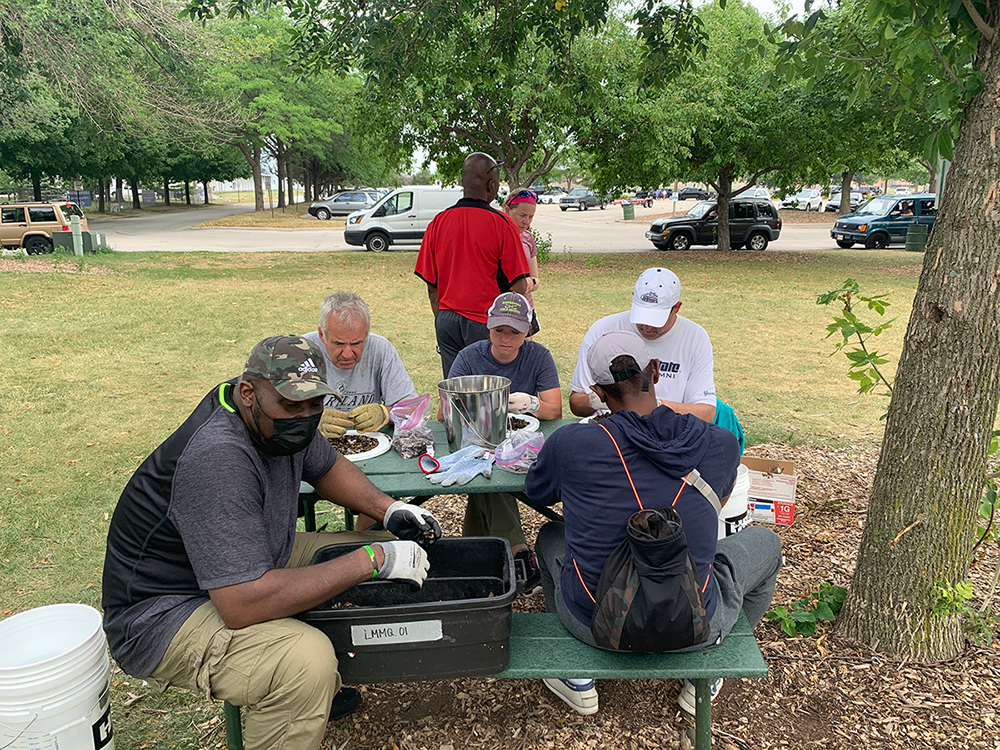Contaminants of emerging concern (CECs) — such as mercury, chlorinated paraffins, and per-and polyfluoroalkyl (PFAS) substances — are a threat to human and ecosystem health in the Great Lakes region. In 2022, the NOAA Mussel Watch Program collected sediment and Dreissenid mussel samples from a network of sites to assess the distribution of CECs in the lakes. Results from this study will support a better description and understanding of the sources, fate, and transport dynamics of CECs in the Great Lakes ecosystem.
Why We Care
As the largest body of freshwater on earth, the Great Lakes are a vital source of drinking water for millions of people, and they support multi-billion dollar fisheries and recreation industries. Thousands of chemical contaminants from many point and non-point sources accumulate in the Great Lakes every day, compromising water quality and food webs, which, in turn, threatens human and ecosystem health. In response to resource managers’ concerns about the extent and impact of these chemical stressors, the NOAA Mussel Watch Program conducted a basin-wide survey to assess the magnitude and distribution of a suite of CECs and legacy contaminants in the Great Lakes.

Map of sites sampled in the Great Lakes region in 2022 as part of the National Mussel Watch Program. Credit: NOAA.
What We Are Doing
The NOAA Mussel Watch Program designed the 2022 Great Lakes chemical stressors survey in collaboration with local and federal partners, including: the NOAA Great Lakes Environmental Research Laboratory, the U.S. Environmental Protection Agency’s (EPA's) Great Lakes Restoration Initiative (GLRI) program, Lake-wide Action Monitoring Programs (LAMPs), and the U.S. Geological Survey (USGS). With contribution and field support from partners, a total of 95 survey sites were selected combining long-term Mussel Watch Program monitoring sites and new target sites. The sites were purposefully selected to enable the project to not only assess the magnitude and distribution of chemical stressors in the nearshore areas, but also, most importantly, to evaluate the status and trends of chemical stressors in EPA’s designated areas of concern and the impacts of land-use categories on the distribution of chemical stressors in the survey area.

Mussel Watch team processing Dreissenid mussel samples in Green Bay, Wisconsin, 2022. Credit: NOAA.
The Mussel Watch Program collects and analyzes sediment and bivalve shellfish (oysters and mussels) as indicators of chemical contamination at its survey locations. For this survey, 70 samples of Dreissenid mussels and 25 of sediment were collected across the major lakes (Erie, Huron, Ontario, Michigan, Superior, and St. Clair) following the Mussel Watch Program standard protocols. The samples are being analyzed for a suite of more than 550 chemical contaminants, including legacy toxic compounds such as DDT, PCB, PAH, mercury, as well as contaminants of emerging concern, such as PFAS, pharmaceuticals, and chlorinated paraffins.
Results of this study will help fill critical data gaps defined in in GLRI Action Plan III focus area 1.3: to “increase knowledge about Great Lakes Water Quality Agreement Annex 3 chemicals in the Great Lakes.” Many of the CEC chemicals measured in this study do not have established benchmarks in the Great Lakes. Data from this survey will support ongoing projects on ecotoxicity of CECs that use available bioactivity data in the USEPA ToxCast database and the ToxEval and ToxMixtures softwares to prioritize contaminants and locations and to define potential environmental health implications. It is also anticipated that data from this survey will be leveraged with other watershed and tributary survey results from EPA and USGS to provide a holistic “summit-to-sea” assessment of chemical contamination in the Great Lakes. A “summit-to-sea” assessment helps identify land-based sources and their impacts to better understand hot spots of pollution. Data and products from this study will be used by local coastal resource managers, including the Great Lakes Regional Pollution Working Group and LAMPs programs, to make informed resource and ecosystem management decisions for the region.
 Official websites use .gov
A .gov website belongs to an official government organization in the United States.
Official websites use .gov
A .gov website belongs to an official government organization in the United States. Secure .gov websites use HTTPS
A lock or https:// means you’ve safely connected to the .gov website. Share sensitive information only on official, secure websites.
Secure .gov websites use HTTPS
A lock or https:// means you’ve safely connected to the .gov website. Share sensitive information only on official, secure websites.